Comparison and Experimental Study of Cotton Stalk Extraction via Nip Roller Based on Nip Motion Trajectory Equation
Abstract
1. Introduction
2. Materials and Methods
2.1. Design of Machine Structures
2.2. Two-Dimensional Path Equation Planning and Stem Deformation Analysis for Institutions
2.2.1. Clamping Trajectory Planning
2.2.2. Calculation of 2D Path Parameters with Clamping Mechanism
2.2.3. The 2D Path Calculation for Sprocket Clamping Mechanism
2.3. Two-Dimensional Path Equation Planning and Stem Deformation Analysis for Institutions
2.3.1. Cotton Straw Deformation Analysis
2.3.2. Rheological Modeling and Development
2.3.3. Leakage and Breakage Analysis
2.4. Field Trial Validation
Indicators and Methods of Testing
3. Results and Discussion
4. Conclusions
- A systematic analysis method for a straw-harvesting mechanism based on the Cartesian trajectory planning method for pulling path analysis is used to provide a theoretical basis for the subsequent design and analysis of the straw-harvesting mechanism through the downscaling analysis of the harvesting path of the harvesting mechanism, the analysis of the rheological model, the analysis of the reasonableness of the pulling path, and the comprehensive evaluation of the working mechanism of the two kinds of clamping mechanisms under this method.
- In the analogical analysis of the cotton straw harvester based on the clamping path in the same environmental state, in the two-dimensional pulling path analysis, the chain-clamping side can be simplified as a straight line, the curvature is regarded as 0, and the curvature of the clamping side of the belt C1max = 8. The curvature of the belt-clamping side is greater than the curvature of the chain-clamping side so as to obtain a more complete path of the clamping force. According to the Workbench mechanical simulation of the clamping force of the two mechanisms, in the two lifting paths, the clamping force of the chain-clamping side increases dramatically at the feeding point, and the maximum clamping stress can reach 305 MPa. In terms of the slope change, compared with the maximum slope change of the two clamping structures, the value of the slope change of the chain clamping is more than that of the belt-clamping side by 6.56%, which is close to each other. In the analysis of the length of the working path, the maximum gripping path of the belt-clamping side is more than that of the belt-clamping side by 19.45%. In summary, the S-shaped extraction path of the belt-clamp side is longer than the linear path of the chain clamp, resulting in a higher extraction rate and lower straw breakage rate. Therefore, the clamped structure is more advantageous than the chained structure.
- According to the field test verification, the lowest pull-off rate of the belt-clamping side was 7.14%, and the highest pull-off rate was 14.86%. The lowest pull-off rate was 82.34%, and the highest pull-off rate was 90.13%. The lowest pull-off rate of the chain-clamping side was 18.54%, and the highest pull-off rate was 29.54%. The lowest pull-off rate was 62.56%, and the highest pull-off rate was 71.36%. The average difference between the two organizations is 13.31% in the pull-off rate and 19.32% in the pull-off rate. The difference between the two leakage rates is 6.01%, so the main reason for the lower pull-out rate of the chain-clamp side than the belt-clamp side is the higher pull-out rate, and the secondary reason is the high leakage rate.
Author Contributions
Funding
Institutional Review Board Statement
Data Availability Statement
Acknowledgments
Conflicts of Interest
References
- Chen, M.; Zhao, W.; Wang, Z.; Zhang, J.; Xie, H.; Han, B. Research status of technology related to cotton stalk extraction. China J. Agric. Chem. 2019, 40, 29–35. (In Chinese) [Google Scholar] [CrossRef]
- Pandirwar, A.P.; Khadatkar, A.; Mehta, C.R.; Majumdar, G.; Idapuganti, R.; Mageshwaran, V.; Shirale, A.O. Technological advancement in harvesting of cotton stalks to establish sustainable raw material supply chain for industrial applications: A review. BioEnergy Res. 2023, 16, 741–760. [Google Scholar] [CrossRef]
- Dong, S.; Wang, F.; Qiu, Z.; Sun, Y. Design and experiment of self-propelled cotton stalk picking harvester. Trans. Chin. Soc. Agric. Mach. 2010, 41, 99–102. [Google Scholar]
- Xie, J.; Wu, S.; Cao, S.; Zhang, Y.; Zhao, W.; Zhou, J. Design and testing of clamping roller type cotton stalk extraction device. Trans. Chin. Soc. Agric. Mach. 2023, 54, 101–111. [Google Scholar] [CrossRef]
- Luo, T.; Cheng, C.; Li, F. Inverse solution of redundant robot arm based on glow worm swarm optimization alhorithm of time-varying. Comput. Integr. Manuf. Syst. 2016, 22, 576–582. (In Chinese) [Google Scholar] [CrossRef]
- Xu, X.; Li, L.; Ren, B.; Zhu, C. Dynamic Characterization of Spatial Axis Cross-Angle Herringbone Planetary Gear System. J. Mech. Eng. 2023, 59, 141–150. [Google Scholar] [CrossRef]
- Cai, J.; Zhang, J.; Ye, T. Design and testing of a gripper belt type cotton stalk harvester. Trans. Chin. Soc. Agric. Eng. 2023, 59, 141–150. [Google Scholar] [CrossRef]
- Hou, J.; Li, C.; Lou, W.; Zhou, K.; Li, Y.; Li, T. Design and Test of Floating Clamping Device for Garlic Combine Harvester. Trans. Chin. Soc. Agric. Mach. 2023, 54, 137–145. [Google Scholar] [CrossRef]
- Zhang, G.; Li, Y.; Li, Z.; Zhang, Y.; Zhai, K. Measuring system of cotton stalk real-time pull force in the field based on LabVIEW. In Proceedings of the ASABE 2014 Annual International Meeting, Montreal, QC, Canada, 13–16 July 2014. Paper 141912493. [Google Scholar] [CrossRef]
- Chen, X. Parameter Calibration of Discrete Element Model for Cotton Rootstalk–Soil Mixture at Harvest Stage in Xinjiang Cotton Field. Agriculture 2023, 13, 1344. [Google Scholar] [CrossRef]
- Zhang, B.; Liang, R. Test and Analysis on Friction Characteristics of Major Cotton Stalk Cultivars in Xinjiang. Agriculture 2022, 12, 906. [Google Scholar] [CrossRef]
- Yan, G.-L.; Tian, S.-F.; Mu, X.-M.; Cao, C.-M.; Wang, R.-B.; Chen, Z.-K. Influence of ear stripping and stalk harvesting time on main nutrient components of sweet corn stalks. Pratacultural Sci. 2015, 9, 1323. [Google Scholar] [CrossRef]
- Pan, Z.G. Research on Cotton Stalk Harvester Based on Double Roller Type. Adv. Mater. Res. 2014, 945–949, 286–289. [Google Scholar] [CrossRef]
- Dong, X.; Zhang, Z.; Wang, S.; Shen, Z.; Cheng, X.; Lv, X.; Pu, X. Soil properties, root morphology and physiological responses to cotton stalk biochar addition in two continuous cropping cotton field soils from Xinjiang, China. PeerJ 2022, 10, e12928. (In Chinese) [Google Scholar] [CrossRef]
- Baker, K.D.; Hughs, E.; Foulk, J. Cotton Quality as Affected by Changes in Spindle Speed. Appl. Eng. Agric. 2010, 26, 363–369. [Google Scholar] [CrossRef]
- Zhou, T.; Tian, B.; Chen, Y.Q.; Shen, Y. Painlevé analysis, auto-Bäcklund transformation and analytic solutions of a (2 + 1)-dimensional generalized Burgers system with the variable coefficients in a fluid. Nonlinear Dyn. 2022, 108, 2417–2428. [Google Scholar] [CrossRef]
- Zhang, J.; Rui, Z.; Cai, J. Design and testing of a front-mounted belt clamping and conveying cotton stalk puller. Trans. Chin. Soc. Agric. Mach. 2021, 52, 77–152. [Google Scholar] [CrossRef]
- Tang, Z.; Han, Z.; Gan, B.; Bao, C.; Hao, F. Design and testing of a harvesting stand for cotton straw pulling in the wrong row. Trans. Chin. Soc. Agric. Mach. 2010, 41, 80–85. [Google Scholar]
- Gorlova, I.; Khalmuradov, T. Experimental technology for harvesting the cotton yield. E3S Web Conf. 2021, 258, 04039. [Google Scholar] [CrossRef]
- Zhang, J.; Gao, Z.; Cai, J. Design and test of transverse-axis counter-roller type cotton stalk pulling device. Trans. Chin. Soc. Agric. Eng. 2021, 37, 43–52. [Google Scholar] [CrossRef]
- Li, Y.; Cheng, C.; Xu, L. Design and experiment of baler for 4L-4.0 combine harvester of rice and wheat. Trans. Chin. Soc. Agric. Eng. 2016, 32, 29–35, (In Chinese with English abstract). [Google Scholar]
- Zhang, B.; Chen, X. Cotton stalk restitution coefficient determination tests based on the binocular high-speed camera technology. Int. J. Agric. Biol. Eng. 2022, 15, 181–189. [Google Scholar] [CrossRef]
- Zhang, J.; Zhang, P.; Zhang, H.; Tan, C.; Wan, W.; Wang, Y. Discrete Element Simulation Parameters Calibration for Xinjiang Cotton Straw. Trans. Chin. Soc. Agric. Mach. 2024, 55, 76–84+108, (In Chinese with English abstract). [Google Scholar] [CrossRef]
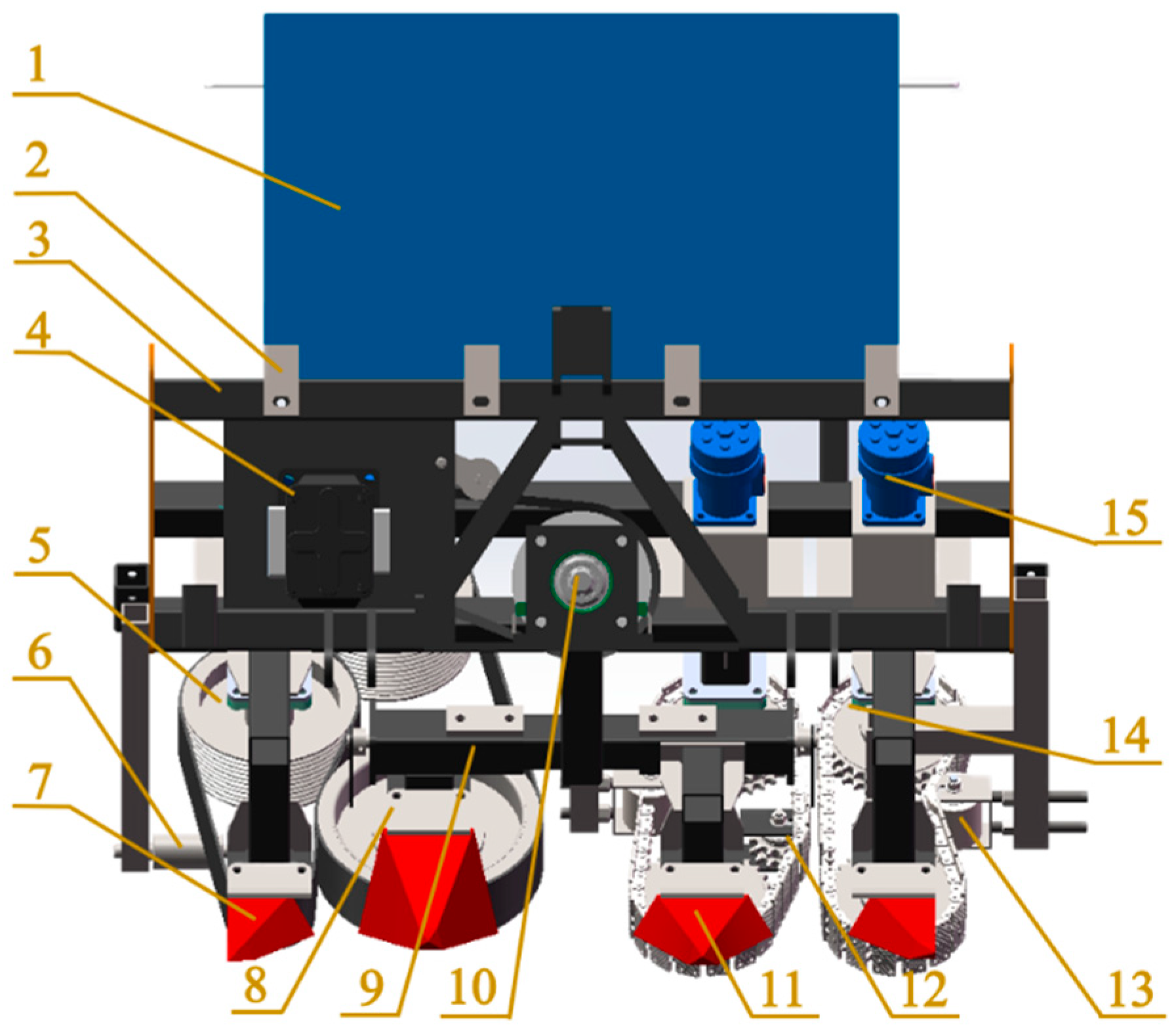
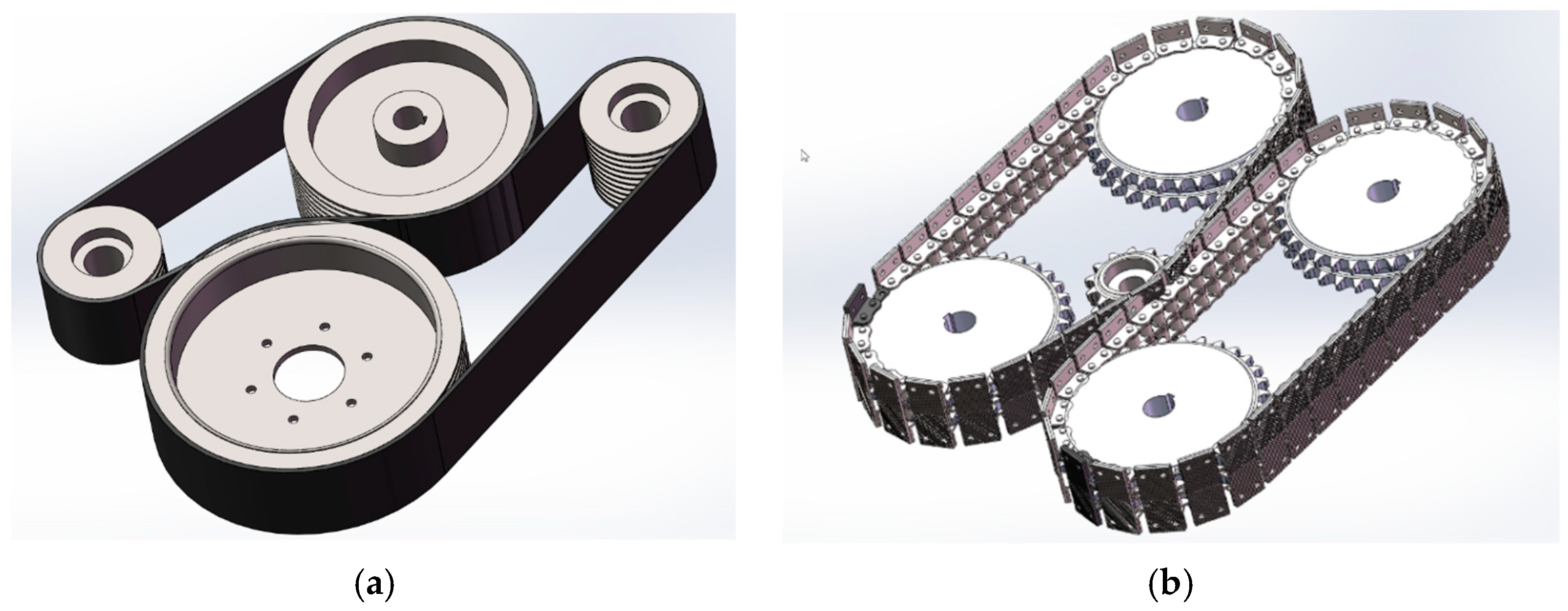
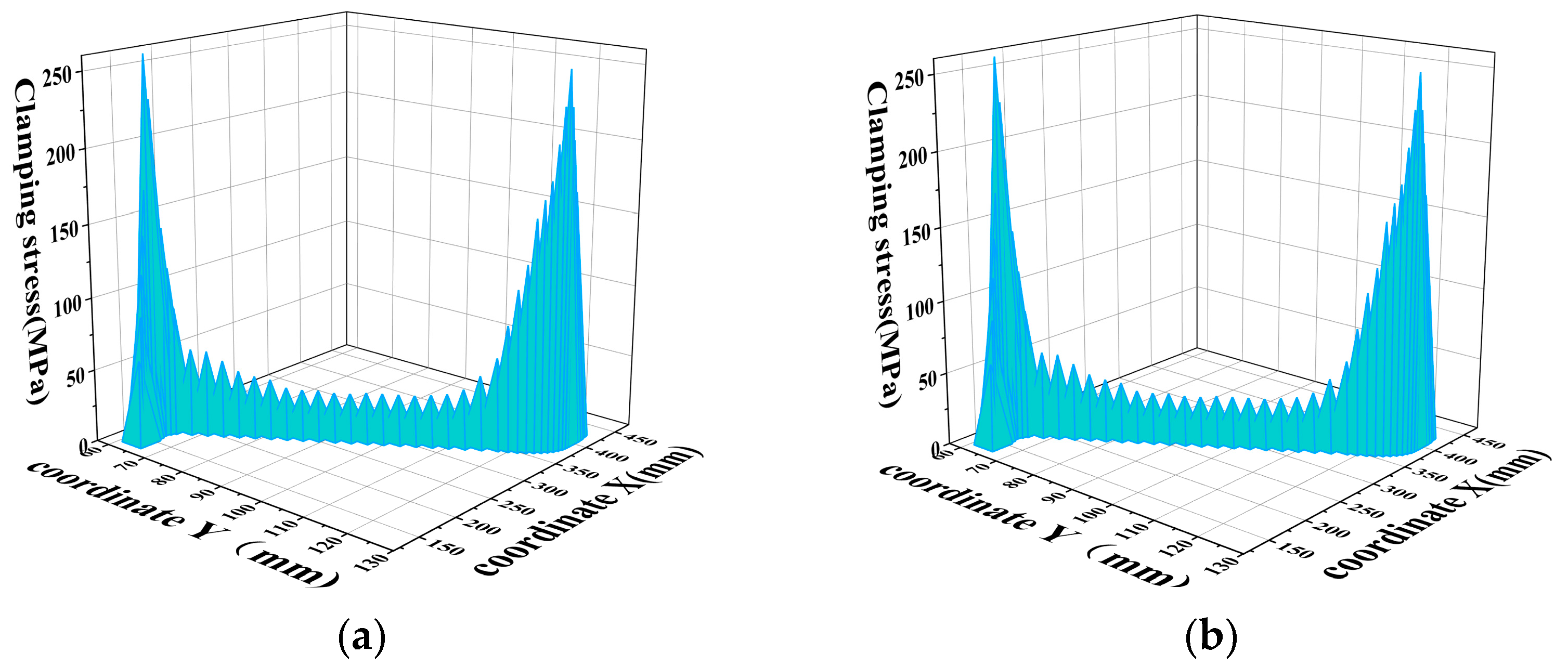
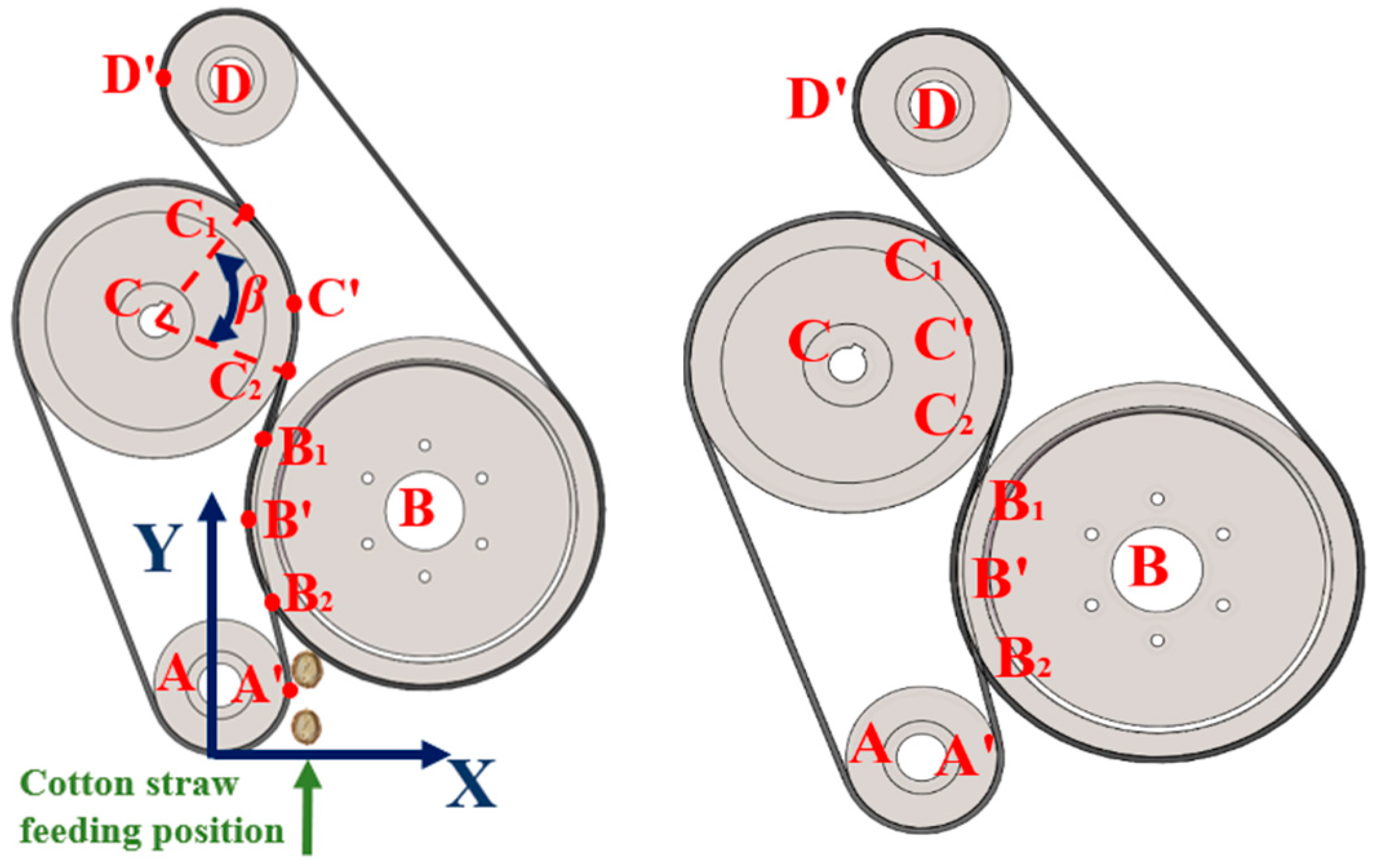
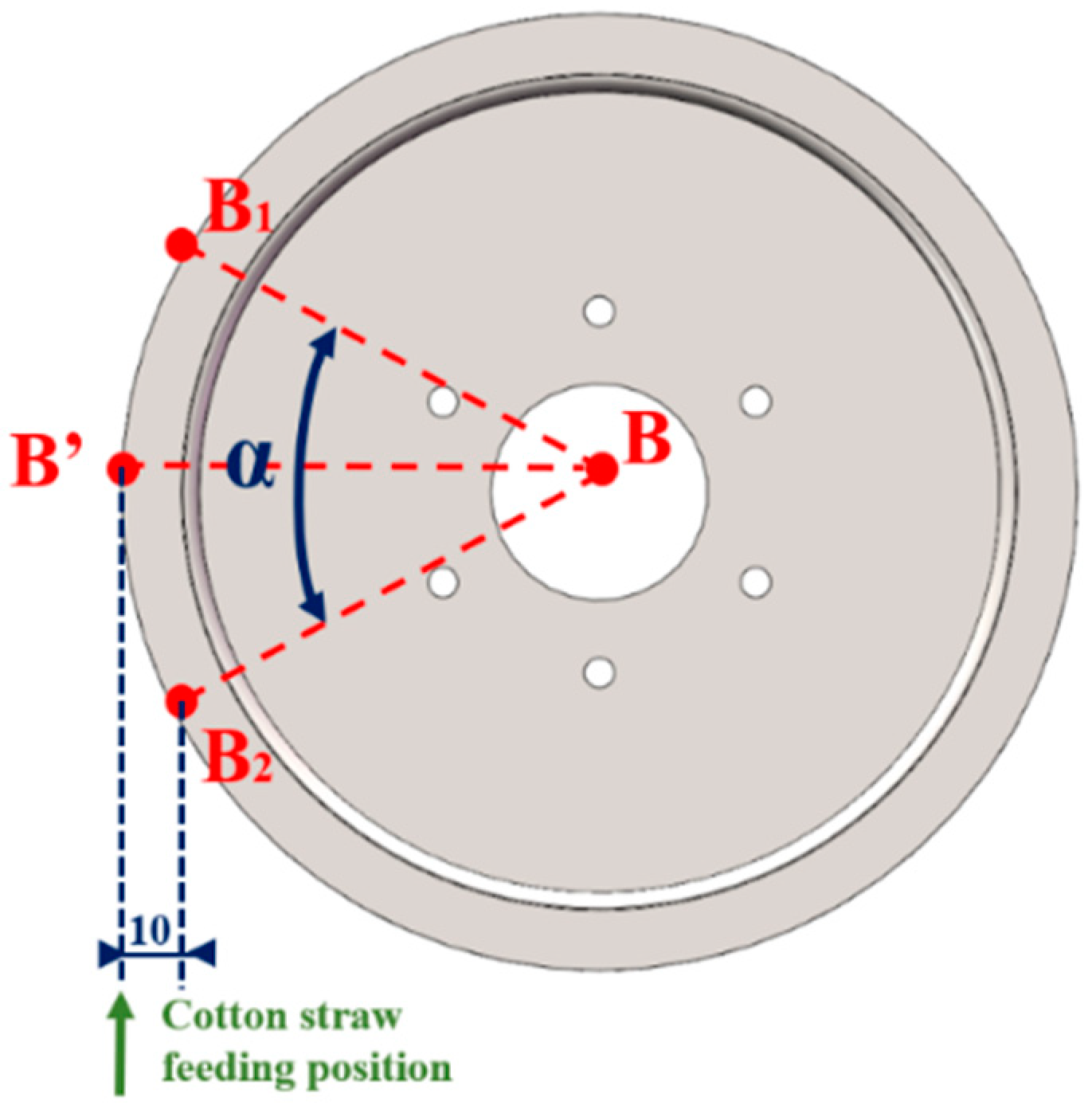
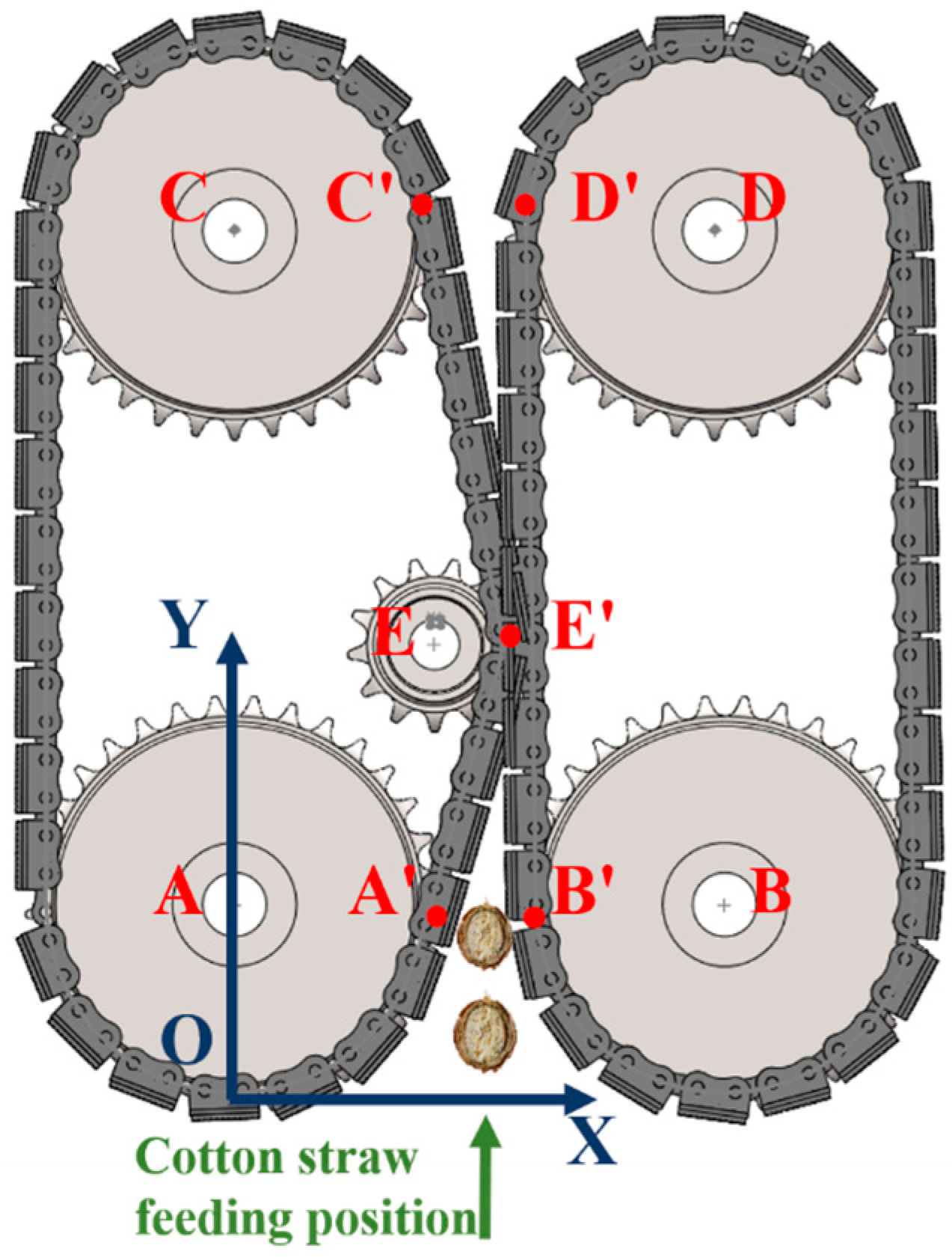


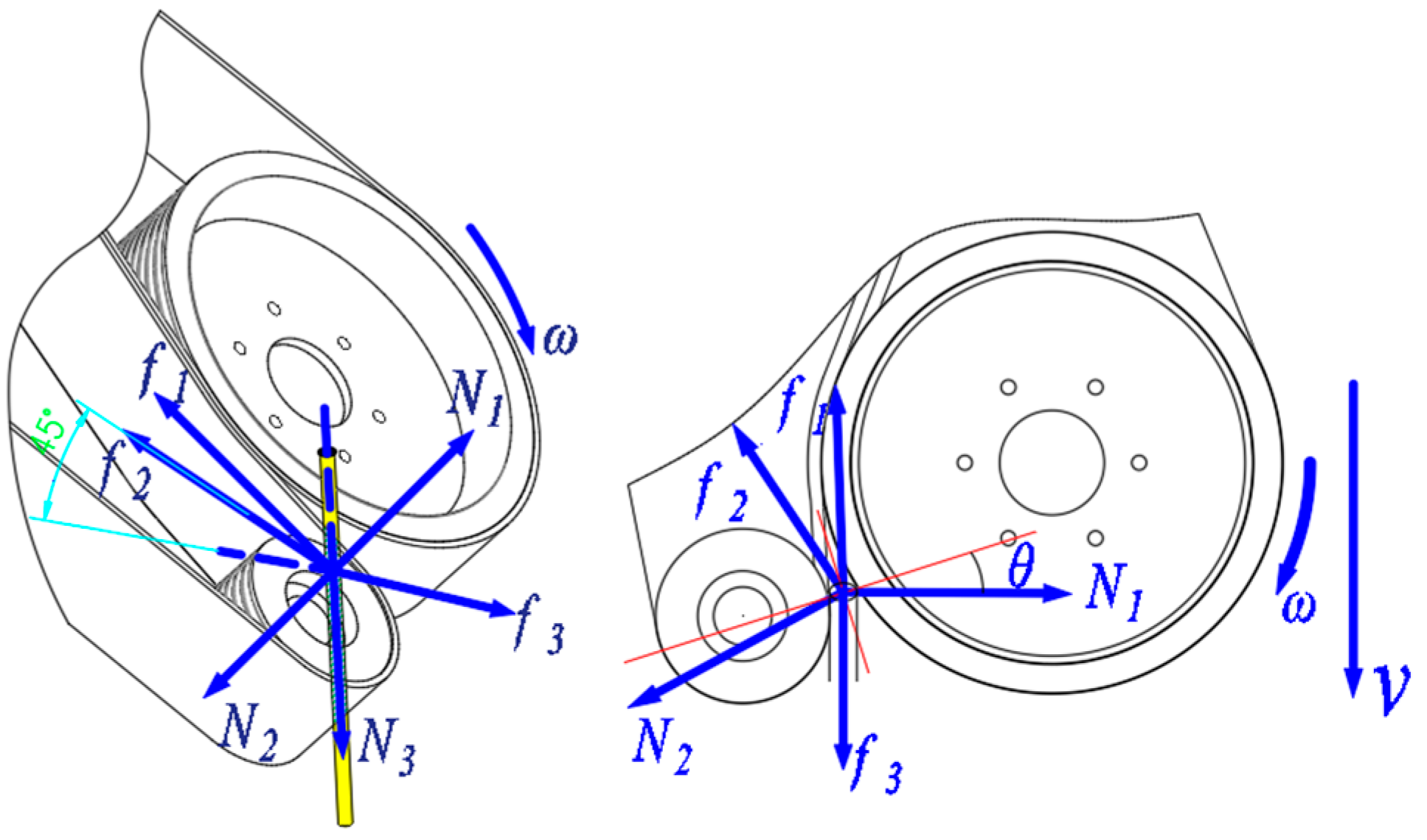
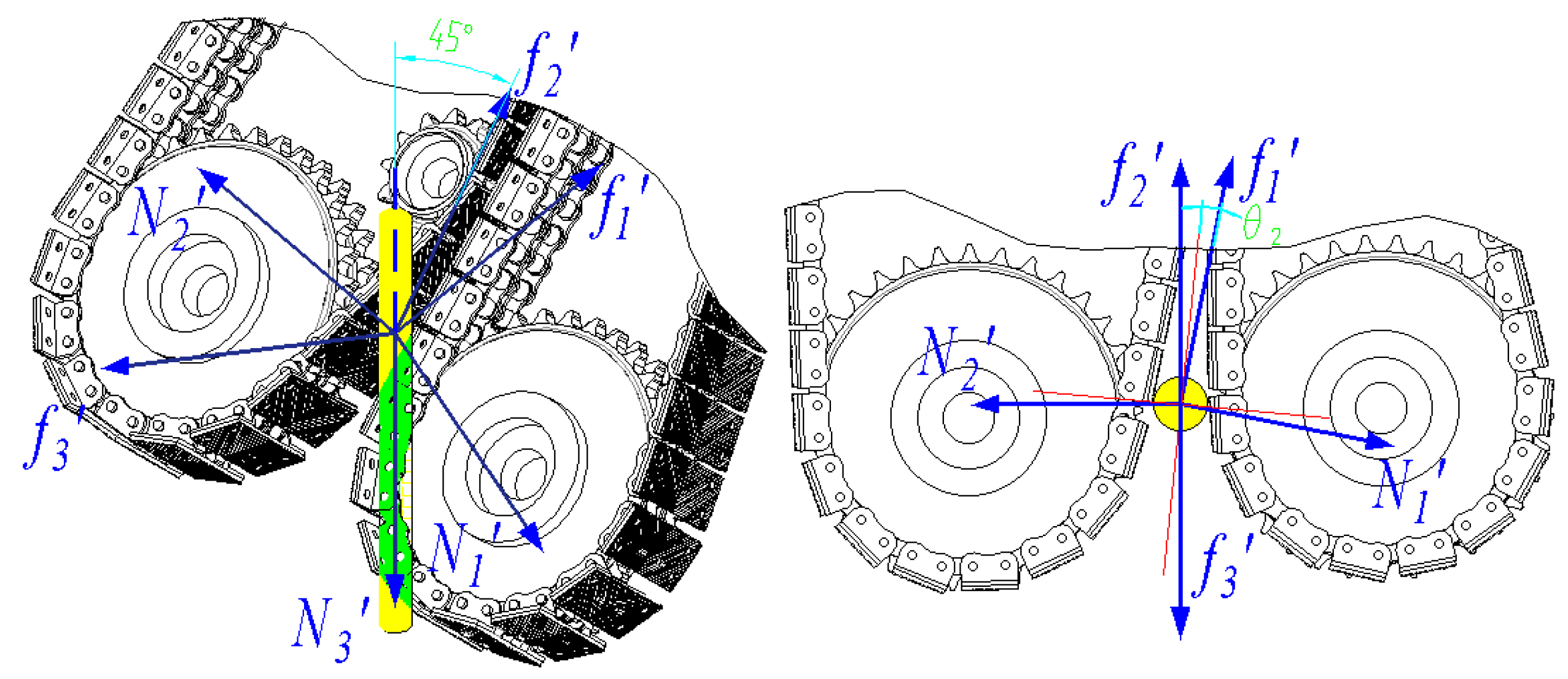



| Parameters | Value |
|---|---|
| Size of the machine (mm × mm × mm) | 1000 × 1200 × 1360 |
| Working width (mm) | 880 |
| Driving form | Tractor rear output with hydraulic pump drive |
| Hook-up form | Rear suspension type |
| Number of lines of work | 4 |
| Working speed (m/s) | 2~4 |
| Clamping pulley diameter (mm + mm + mm) | 120 + 120 + 317 + 250 |
| Clamping sprocket diameter (mm × Number) | 188.5 × 4 |
| Serial Number | Considerations |
|---|---|
| Drive Wheel Speed/(r·min−1) | |
| −1 | 250 |
| 0 | 300 |
| 1 | 350 |
| Test Number | Considerations | Organization Number | Breakthrough Rate P1/% | Net Extraction Rate P2/% |
|---|---|---|---|---|
| (r·min−1) | ||||
| 1 | 250 | L | 7.30 | 89.80 |
| 2 | 7.52 | 89.52 | ||
| 3 | 7.14 | 90.13 | ||
| 4 | T | 18.62 | 71.24 | |
| 5 | 18.54 | 71.36 | ||
| 6 | 19.43 | 70.46 | ||
| 7 | 300 | L | 11.20 | 86.15 |
| 8 | 11.33 | 86.04 | ||
| 9 | 11.51 | 85.98 | ||
| 10 | T | 24.43 | 66.96 | |
| 11 | 25.04 | 66.52 | ||
| 12 | 24.83 | 67.25 | ||
| 13 | 350 | L | 14.86 | 82.34 |
| 14 | 13.52 | 83.62 | ||
| 15 | 13.78 | 83.24 | ||
| 16 | T | 28.62 | 63.10 | |
| 17 | 29.54 | 62.56 | ||
| 18 | 28.96 | 63.46 |
| SS | df | MS | F | p-Value | ||
|---|---|---|---|---|---|---|
| breakthrough rate | intergroup | 68.878 | 2 | 34.439 | 182.678 | <0.01 |
| within a group | 1.131 | 6 | 0.189 | |||
| net extraction rate | intergroup | 68.640 | 2 | 34.320 | 193.244 | <0.01 |
| within a group | 1.066 | 6 | 0.178 |
| SS | df | MS | F | p-Value | ||
|---|---|---|---|---|---|---|
| breakthrough rate | intergroup | 157.984 | 2 | 78.992 | 249.047 | <0.01 |
| within a group | 1.903 | 6 | 0.317 | |||
| net extraction rate | intergroup | 95.549 | 2 | 47.775 | 247.495 | <0.01 |
| within a group | 1.158 | 6 | 0.193 |
Disclaimer/Publisher’s Note: The statements, opinions and data contained in all publications are solely those of the individual author(s) and contributor(s) and not of MDPI and/or the editor(s). MDPI and/or the editor(s) disclaim responsibility for any injury to people or property resulting from any ideas, methods, instructions or products referred to in the content. |
© 2024 by the authors. Licensee MDPI, Basel, Switzerland. This article is an open access article distributed under the terms and conditions of the Creative Commons Attribution (CC BY) license (https://creativecommons.org/licenses/by/4.0/).
Share and Cite
Wang, Y.; Zhang, J.; Huo, Y.; Wang, Z.; Li, J.; Li, Z. Comparison and Experimental Study of Cotton Stalk Extraction via Nip Roller Based on Nip Motion Trajectory Equation. Agriculture 2024, 14, 950. https://doi.org/10.3390/agriculture14060950
Wang Y, Zhang J, Huo Y, Wang Z, Li J, Li Z. Comparison and Experimental Study of Cotton Stalk Extraction via Nip Roller Based on Nip Motion Trajectory Equation. Agriculture. 2024; 14(6):950. https://doi.org/10.3390/agriculture14060950
Chicago/Turabian StyleWang, Yichao, Jiaxi Zhang, Yanjun Huo, Zhenwei Wang, Jinming Li, and Zhenkun Li. 2024. "Comparison and Experimental Study of Cotton Stalk Extraction via Nip Roller Based on Nip Motion Trajectory Equation" Agriculture 14, no. 6: 950. https://doi.org/10.3390/agriculture14060950
APA StyleWang, Y., Zhang, J., Huo, Y., Wang, Z., Li, J., & Li, Z. (2024). Comparison and Experimental Study of Cotton Stalk Extraction via Nip Roller Based on Nip Motion Trajectory Equation. Agriculture, 14(6), 950. https://doi.org/10.3390/agriculture14060950





